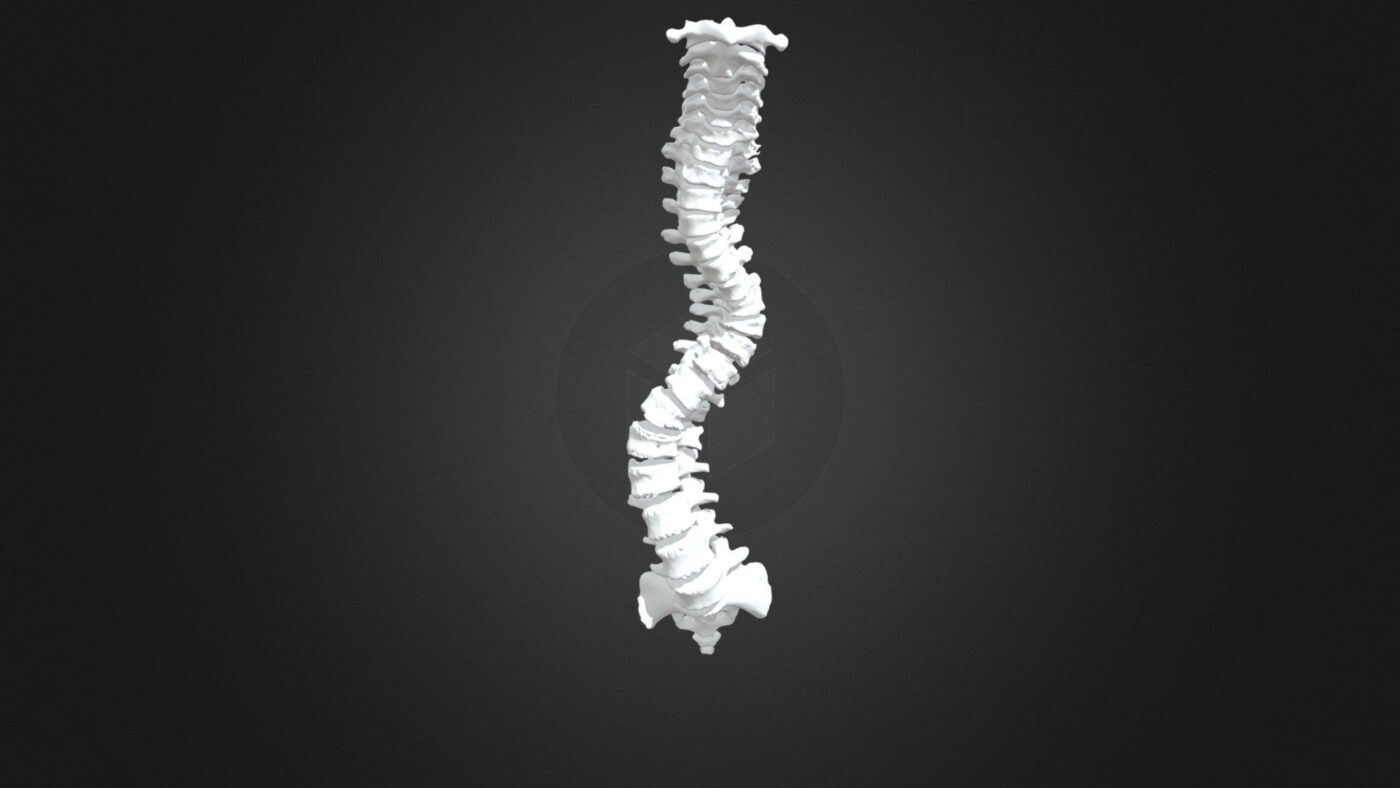Scoliosis is a condition characterized by an abnormal curvature of the spine. One specific type of scoliosis is known as S shaped scoliosis, which affects the thoracolumbar region of the spine. This article aims to provide a comprehensive overview of S shaped scoliosis of the thoracolumbar spine, including its diagnosis and treatment options.
Introduction to S Shaped Scoliosis of the Thoracolumbar Spine
S shaped scoliosis refers to a spinal curvature that resembles the letter “S” when viewed from the back. It typically affects the thoracolumbar region, which is the area where the thoracic spine (upper back) transitions into the lumbar spine (lower back). This condition can cause significant pain, discomfort, and functional limitations for individuals affected by it.

Understanding the Anatomy of the Thoracolumbar Spine
To better understand S shaped scoliosis of the thoracolumbar spine, it is essential to have a basic understanding of the anatomy of this region. The thoracolumbar spine consists of twelve thoracic vertebrae and five lumbar vertebrae. These vertebrae are connected by intervertebral discs, which provide flexibility and shock absorption. The spinal column also houses the spinal cord, which transmits nerve signals between the brain and the rest of the body.
Signs and Symptoms of S Shaped Scoliosis in the Thoracolumbar Region
The signs and symptoms of S shaped scoliosis in the thoracolumbar region can vary depending on the severity of the curvature. Common symptoms include back pain, muscle stiffness, uneven shoulder or hip alignment, and visible asymmetry of the spine. Some individuals may also experience difficulty breathing or digestive issues due to the compression of organs caused by the abnormal curvature.
Diagnostic Tools and Techniques for S Shaped Scoliosis
To diagnose S shaped scoliosis in the thoracolumbar spine, healthcare professionals employ various diagnostic tools and techniques. The most common initial screening method is a physical examination, where the healthcare provider assesses the patient’s posture, range of motion, and any visible signs of spinal curvature. If scoliosis is suspected, further imaging tests are usually recommended.
X-ray Imaging for Diagnosing S Shaped Scoliosis in the Thoracolumbar Spine
X-ray imaging is the gold standard for diagnosing scoliosis, including S shaped scoliosis in the thoracolumbar spine. X-rays provide detailed images of the spine, allowing healthcare professionals to measure the degree of curvature and identify any associated abnormalities. These images also help determine the appropriate treatment approach based on the severity of the condition.

Other Imaging Modalities for Evaluating S Shaped Scoliosis
In addition to X-rays, other imaging modalities may be used to evaluate S shaped scoliosis in the thoracolumbar region. Magnetic Resonance Imaging (MRI) can provide more detailed information about the soft tissues surrounding the spine, such as the spinal cord and nerves. Computed Tomography (CT) scans may be utilized to assess bony structures and detect any abnormalities that may require surgical intervention.
Classification and Grading of S Shaped Scoliosis in the Thoracolumbar Region
S shaped scoliosis in the thoracolumbar region is classified and graded based on the Cobb angle, which measures the degree of curvature. Mild scoliosis is typically defined as a Cobb angle between 10 and 25 degrees, moderate scoliosis ranges from 25 to 40 degrees, and severe scoliosis is characterized by a Cobb angle greater than 40 degrees. This classification helps guide treatment decisions and predict the potential progression of the condition.
Non-Surgical Treatment Options for S Shaped Scoliosis
Non-surgical treatment options are often the first line of management for S shaped scoliosis in the thoracolumbar spine, especially for mild to moderate cases. These treatment options aim to alleviate pain, improve posture, and prevent further progression of the curvature. Physical therapy exercises, chiropractic care, and pain management techniques such as medication or acupuncture may be recommended.
Bracing Techniques for Managing S Shaped Scoliosis in the Thoracolumbar Spine
Bracing is another non-surgical treatment option commonly used for managing S shaped scoliosis in the thoracolumbar spine, particularly in adolescents with moderate curvature. Braces are designed to apply corrective forces to the spine, helping to halt or slow down the progression of the curvature. The type and duration of bracing depend on the severity of the scoliosis and the individual’s growth potential.

Surgical Interventions for Correcting S Shaped Scoliosis
In cases of severe S shaped scoliosis in the thoracolumbar region or when non-surgical treatments fail to provide adequate relief, surgical intervention may be necessary. The primary goal of surgery is to correct the spinal curvature and stabilize the spine. This is typically achieved through spinal fusion, where the affected vertebrae are fused together using bone grafts and metal implants.
Postoperative Care and Rehabilitation for S Shaped Scoliosis Patients
After undergoing surgery for S shaped scoliosis in the thoracolumbar spine, patients require postoperative care and rehabilitation to ensure optimal recovery. This may involve pain management, physical therapy, and gradually increasing activity levels under the guidance of healthcare professionals. Regular follow-up appointments and imaging tests are essential to monitor the progress and detect any potential complications.
Long-term Management and Prognosis of S Shaped Scoliosis in the Thoracolumbar Region
Long-term management of S shaped scoliosis in the thoracolumbar region focuses on maintaining spinal alignment, managing pain, and preventing further progression of the curvature. Regular check-ups with healthcare professionals, adherence to prescribed exercises or bracing, and a healthy lifestyle can contribute to a better prognosis. However, it is important to note that the prognosis can vary depending on the severity of the scoliosis and individual factors.
In conclusion, S shaped scoliosis of the thoracolumbar spine is a specific type of spinal curvature that can cause significant discomfort and functional limitations. Early diagnosis and appropriate treatment are crucial for managing this condition effectively. Through a combination of diagnostic tools, non-surgical interventions, and surgical options, healthcare professionals can help individuals with S shaped scoliosis achieve better spinal alignment, alleviate pain, and improve their quality of life.
参考文献
- Weinstein SL, Dolan LA, Cheng JC, et al. "Adolescent idiopathic scoliosis.". ランセット.2008;371(9623):1527-1537. doi: 10.1016/S0140-6736(08)60658-3. リンク
- Negrini S, Donzelli S, Aulisa AG, et al. "2016年SOSORTガイドライン:成長期の特発性側弯症の整形外科的治療とリハビリテーション治療". 脊柱側湾症と脊椎疾患.2018;13:3. doi: 10.1186/s13013-018-0175-8. リンク
- Trobisch P, Suess O, Schwab F. "Idiopathic scoliosis". ドイツ芸術協会. 2010;107(49):875-883. doi: 10.3238/arztebl.2010.0875. リンク
- Hresko MT.「臨床の実際。思春期の特発性側弯症" N Engl J Med. 2013;368(9):834-841. doi: 10.1056/NEJMcp1209063. リンク
- Bettany-Saltikov J, Weiss HR, Chockalingam N, et al. "Surgical versus non-surgical interventions in people with adolescent idiopathic scoliosis.". Cochrane Database Syst Rev. 2015;2015(4). doi: 10.1002/14651858.CD010663.pub2. リンク
- 社会保障庁。"障害者給付" リンク
- Lonstein JE, Carlson JM."未治療の特発性側弯症における成長期のカーブ進行予測" J Bone Joint Surg Am. 1984;66(7):1061-1071. doi: 10.2106/00004623-198466070-00008. リンク
- Kaspiris A, Grivas TB, Weiss HR, Turnbull D. "Scoliosis:診断と治療のレビュー". 国際整形外科ジャーナル. 2013;37(1):34-42. doi: 10.1038/s41390-020-1047-9. リンク
- Monticone A, Cazzaniga D, Rocca B, Ferrante S. “Effects of a multimodal exercise program on patients with adolescent idiopathic scoliosis: A randomized controlled trial.” 脊柱側湾症と脊椎疾患. 2016;11:15. doi: 10.1186/s13013-016-0060-1. リンク
- Weiss HR, Moradi B, Schreiber S, et al. “Bracing for scoliosis in children and adolescents.” Cochrane Database Syst Rev. 2013;2013(4). doi: 10.1002/14651858.CD003368.pub3. リンク
- Berven SH, Wong R, Grabel L. “Scoliosis: Overview and management.” オーソップ・クリン・ノース・アム. 2015;46(2):179-191. doi: 10.1016/j.ocl.2014.12.002. リンク
- McMaster MJ, Lonstein JE, D’Andrea LP. “The treatment of idiopathic scoliosis in adults.” 背骨. 2004;29(7). doi: 10.1097/01.BRS.0000119056.93030.39. リンク
- Weinstein SL, Dolan LA. “Scoliosis: A comprehensive review.” Orthopaedics. 2004;27(4):233-240. doi: 10.3928/0147-7447-20040701-03. リンク
- Hsu LC, Cheng JCY. “Adolescent idiopathic scoliosis: An update.” 欧州脊椎学会. 2008;17(5):757-767. doi: 10.1007/s00586-008-0677-3. リンク
- Schreiber S, Parent EC, Nordin M, et al. “Bracing for idiopathic scoliosis in adolescents: An updated systematic review.” 脊柱側湾症と脊椎疾患. 2019;14:9. doi: 10.1186/s13013-019-0162-7. リンク

